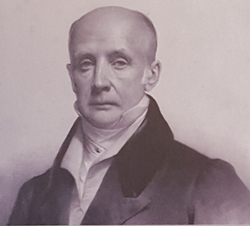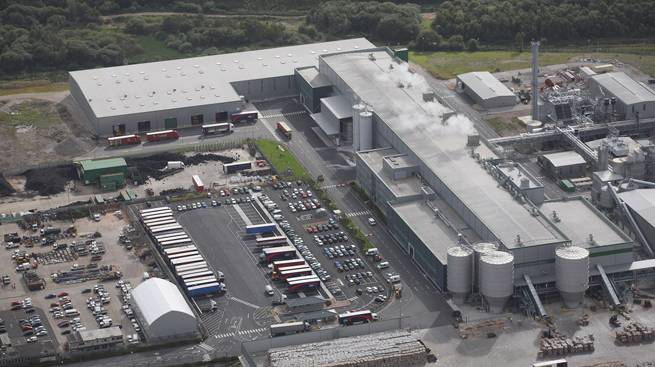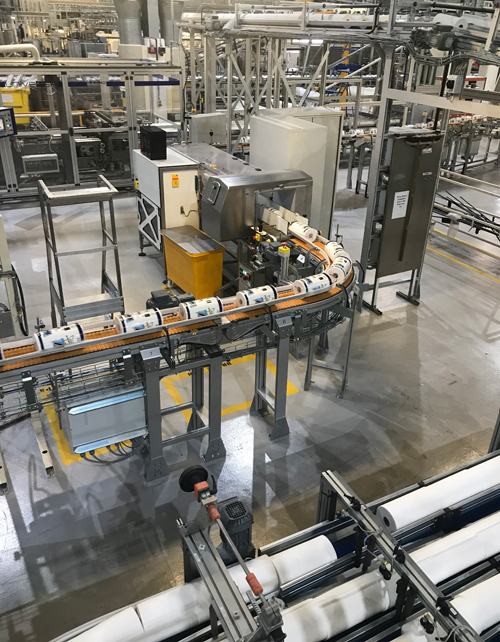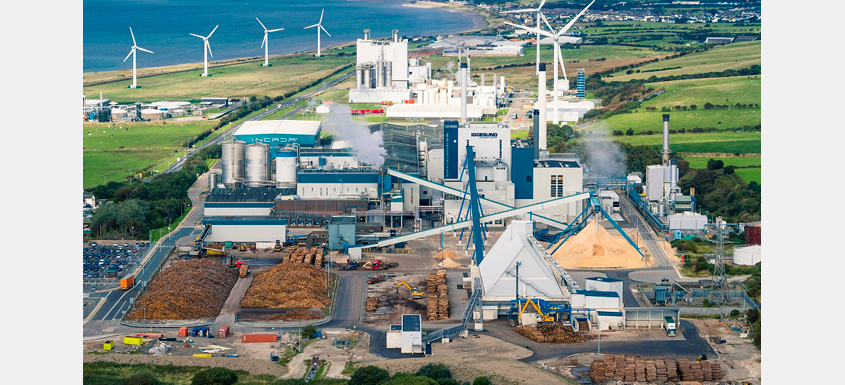In comparison with e.g., Canada, Finland and Sweden, the British paper industry’s fibre need is to about 70 % covered by recycled fibres.
There are only two mills integrated with their own pulp production, the Iggesund Workington board mill and the UPM Caledonian LWC mill. All other mills are based on recycled fibres and/or import of mainly chemical pulps. The reason for this situation is of course lack of forests and a fairly big population “producing” a lot of recycled papers and packaging.
Let’s go back in history to see where it all began. Paper manufacturing has a long history in Britain and the first mentioned paper mill in England was a mill near Stevenage in 1490. Gradually more mills started, all using rag as raw material which during a period was a problem due to the idea that rags helped to spread the Plague. The industrial revolution increased production and consumption of textiles which increased the available amount of rags. The number of paper mills grew rapidly and by the end of the 19th century there were 416 paper mills in England and Wales, 49 in Scotland and 60 on Ireland. At that time, the paper industry used about 11,000 tonnes of rags.
 Bryan Donkin developed Nicolas-Louis Robert’s paper machine concept into a working paper machine.Due to increased demand for paper the production methods needed to be more efficient and in this development three Englishmen played key roles. The English universal talent Bryan Donkin developed Louis-Nicholas Robert’s idea into a industrially usable paper machine which was installed in the Frogmore Mill in 1803, making the mill first in the world with a paper machine. He also set up Bryan Donkin & Company which became the world’s biggest paper machine manufacturer of its time. John Dickinson was another technical genius and he invented the cylinder mould machine as well as e.g. a sheet cutter and a drying cylinder. The third technical contributor was Thomas Bonsor Crompton who also invented a drying cylinder and got the patent for a drying section consisting of several drying cylinders. During a great deal of the 19th century the UK was a leading nation in ground-breaking papermaking technology.
Bryan Donkin developed Nicolas-Louis Robert’s paper machine concept into a working paper machine.Due to increased demand for paper the production methods needed to be more efficient and in this development three Englishmen played key roles. The English universal talent Bryan Donkin developed Louis-Nicholas Robert’s idea into a industrially usable paper machine which was installed in the Frogmore Mill in 1803, making the mill first in the world with a paper machine. He also set up Bryan Donkin & Company which became the world’s biggest paper machine manufacturer of its time. John Dickinson was another technical genius and he invented the cylinder mould machine as well as e.g. a sheet cutter and a drying cylinder. The third technical contributor was Thomas Bonsor Crompton who also invented a drying cylinder and got the patent for a drying section consisting of several drying cylinders. During a great deal of the 19th century the UK was a leading nation in ground-breaking papermaking technology.
The UK paper industry has, like in any other country, gone through substantial changes. A century ago, the British paper industry was in British hands with company names like Wiggins Teape, Inveresk, Reed & Smith, Bowaters, John Dickinson and Thomas Tait. In 1959 it employed as many as 100,000 people, a number which today is down to 8,900 people. Today there are 47 paper and board mills in the UK with an annual production of about four million tonnes of paper and board.
The UK paper and board consumption in 2019 was 10.8 million tonnes and as its own paper industry exported about one million tonnes, the import was close to eight million tonnes. The UK is today actually the biggest net importer of paper and board in the world. The country has an efficient collection of recycled paper and packaging, collecting about 7.5 million tonnes in 2019. As the British paper industry the same year used about 3.2 million tonnes as raw material in the domestic paper and board production, 4.3 million tonnes were exported. This makes Britain the largest exporter of collected recycled fibre in the world. From a raw material point of view there is obviously room for more domestic production based on recycled fibre.
 Saica has the newest and biggest paper machine for production of testliner and fluting. Photo: Saica.
Saica has the newest and biggest paper machine for production of testliner and fluting. Photo: Saica.
The UK production capacity is 4.2 million tonnes which makes the UK the 20th biggest producer of paper and board in the world. The 20:80 rules applies rather well as the ten biggest mills, with an annual capacity of 100,000 tonnes or more, account for a capacity of 3.1 million tonnes out of the total capacity of 4.2 million tonnes.
Since 2010 a number of changes have taken place in Great Britain, similar to trends elsewhere. Production of packaging papers have increased whereas the volumes of graphical papers have almost halved. The production of hygiene papers has remained rather stable during this period. In 2009 the German owned Palm Paper started a greenfield mill with a capacity of 400,000 tonnes of newsprint and improved newsprint based on recycled fibre. This machine is one of the biggest newsprint machines in the world. On the other hand, UPM Shotton and Aylesford Newsprint have closed two newsprint machines since 2010. UPM Shotton has one remaining machine and the mill is up for sale so within a foreseeable future Palm Paper will be the only producer of British newsprint. During the period also IP closed their Inverurie mill, which was the biggest producer of woodfree graphical papers in the UK.
The British production capacity of packaging paper, mainly testliner and fluting, and board is a little bit more than 2.1 million tonnes. The total production of testliner and fluting, 1.8 million tonnes, is based on recycled fibre. The biggest mill is DS Smith Kemsley with a capacity of 820,000 tonnes of testliner and fluting as well as plasterboard liners. Second in size is Smurfit Kappa with a combined capacity in their Townsend Hook and Birmingham mills of about half a million tonnes. Third biggest producer, and with the newest UK mill, is Saica Partington Mill, a greenfield mill near Manchester which started in 2012 and has a capacity of 430,000 tonnes testliner and fluting. The production of all four mills is to a large extent integrated with the companies’ own corrugated board plants.
Tissue paper is for obvious reasons a stable segment with an annual capacity level of about 850,000 tonnes divided on 18 tissue mills owned by Essity, Kimberly-Clark, WEPA, Northwood Tissue, Sofidel and Fourstones Group. About 70 % is based on virgin fibre. Essity is the biggest player with five tissue mills and a total capacity of 300,000 tonnes. The biggest mill is Prudhoe with a capacity of 100,000 tonnes,
 Converting tissue to toilet and household rolls is a complicated process. Photo: Essity.
Converting tissue to toilet and household rolls is a complicated process. Photo: Essity.
The second biggest producer is Kimberly-Clark with a combined tissue capacity of 230,000 tonnes in three mills. Their Barrow mill is the UK’s biggest tissue mill with a capacity of 120,000 tonnes. Third on the list of UK tissue producers is Sofidel with three mills and a combined capacity of 160,000 tonnes. WEPA, the German family-owned company, has a present capacity of 60,000 tonnes in their Bridgend mill but will expand to 115,000 tonnes. Kimberly-Clark, Sofidel and WEPA use only virgin fibre as raw material, whereas Essity also uses recycled fibre. In total about 70 % of the British tissue paper production is based on virgin fibre.
Great Britain has a number of niched mills producing anything from very special printing papers, artists papers, banknote papers, insulation papers to e.g. papers for tea bags, filters and sausage casings. The biggest British paper mill for specialities has a capacity of about 70,000 tonnes and the smallest of 1,000 tonnes. Recycled fibres are mainly used by producers of moulded products but the main raw material for speciality grades are chemical pulps and small quantities of Abaca fibres.
The biggest producers of high quality white and coloured printing papers and boards are Arjowiggins Creative Papers and James Cropper. Arjowiggins Creative Papers runs two mills in the UK, Stoneywood and Chartham, as well as a Spanish and a Chinese mill. The well-known Conqueror brand is produced in Stoneywood, the biggest of the British speciality mills. The second biggest speciality mill is Burneside where James Cropper has produced papers since 1845. The mill was in 1856 one of the first in the world to make coloured papers from the first synthetic dyes. The present product range comprises exclusive paper and board products. James Cropper also produces technical non-woven for advanced applications.
 James Cropper produces coloured paper and board increasingly used for luxury packaging. Photo: James Cropper PLC.
James Cropper produces coloured paper and board increasingly used for luxury packaging. Photo: James Cropper PLC.
Acaba fibre is long and strong and is therefore used in production of thin and strong papers. Ahlstrom-Munksjö with mills in Radcliffe and Chirnside as well as the Purico Group with the mills Devon Valley and Union Papertech use Acaba fibre in their production of e.g. tea bags, coffee filters and sausage casings.
Portals DeLaRue is one of very few producers of banknote papers and other security papers in the world. The company has been around for some time as it already in 1724 got an order from Bank of England for banknote paper. The combined capacity of their two mills in Bathford and Overton is about 20,000 tonnes of banknote and security papers. The smallest of the British speciality mills is St Cuthberts Mill producing special artists papers.
 Paper for tea bags is an obvious product in the UK. Photo: Ahlström-Munksjö.
Paper for tea bags is an obvious product in the UK. Photo: Ahlström-Munksjö.
Britain has recently left the European Union and all consequences of its Brexit are still to be seen. The situation is also influenced by the pandemic making it difficult to know what has caused what. However, irrespectively of Brexit, Britain has a substantial raw material resource in the surplus of collected recycled fibre which could attract investments in domestic production instead of exporting it. But as the consumption of paper and board is way above the domestic production and the lack of domestic virgin fibre, the UK will remain a big net importer of paper and board.
Facts British paper industry 2019
| Production: | 3.9 million tonnes of paper and board |
| Export: | 825,000 tonnes |
| Number of employees: | 8 900 people |
| Number of mills: | 47 paper and board mills |
Note: The article is based on facts from CPI, Confederation of Paper Industries.
 Sören Back has been working in the Swedish pulp and paper industry since 1976. With an M.Sc. in chemistry with focus on in pulp and paper technology the career spans from production control, product development, sales and marketing to communications, including PR, primarily in managerial positions. Over the years Sören has worked for MoDo Paper, M-real, now Metsä Board, and SP Processum but is now running his own business, SB Kommunikation AB, as freelance writer and communications consultant with customers mainly within the pulp and paper industry.
Sören Back has been working in the Swedish pulp and paper industry since 1976. With an M.Sc. in chemistry with focus on in pulp and paper technology the career spans from production control, product development, sales and marketing to communications, including PR, primarily in managerial positions. Over the years Sören has worked for MoDo Paper, M-real, now Metsä Board, and SP Processum but is now running his own business, SB Kommunikation AB, as freelance writer and communications consultant with customers mainly within the pulp and paper industry.
